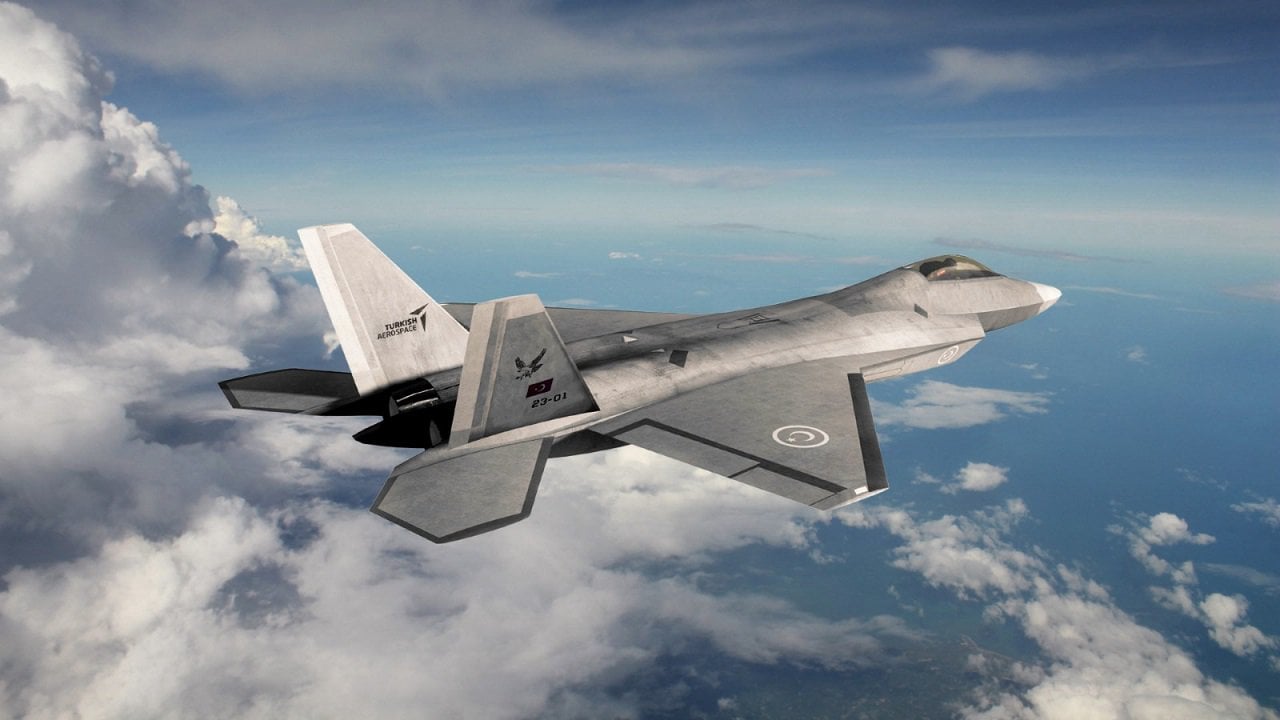TF-X: Turkey’s Dream for a Stealth Fighter: Turkish President Recep Tayyip Erdoğan seems to like playing both sides of the fence in his country’s relations with NATO and Russia alike. On the one hand, he’s supplied the Ukrainians with the TB-2 Bayraktar drones that have been such a game-changer in their fight against Russia. On the other hand, he’s stonewalling against Sweden’s and Finland’s prospective entry into NATO. All of this politicking makes it very uncertain as to whether or not Turkey will be able to get ahold of a stealth fighter, and more specifically whether or not the Turks become the next foreign buyer for Lockheed Martin’s F-35 Lightning II. Barring that, Mr. Erdoğan may be very well inclined to seek a homegrown stealth fighter, the TF-X as an alternative.
That’s Nobody’s Business but the Turks…
Currently, the Turkish Air Force (Türk Hava Kuvvetleri) uses the F-16C/D Fighting Falcon as its primary fighter plane, specifically the Block 30/40/50 models. The Turks have a total of 270 of these warbirds in their aerial arsenal, with the first eight having been purchased directly from the U.S., and the remainder being homegrown, thus giving Turkey the distinction of being one of five countries to locally produce F-16s.
The F-16 obviously remains a highly capable aircraft, as the Turkish Air Force itself demonstrated during its highly controversial shootdown of a Russian Sukhoi Su-24 “Fencer” back in November 2015. Indeed, the F-16 is continually being improved, as attested by the latest variant, the F-16V. However, there’s no getting around the fact that the Fighting Falcon (or the “Viper,” as its Stateside aircrews prefer to affectionately call it) is a fourth-generation fighter, thus raising concerns about its ability to handle adversary nations’ fifth-generation fighters such as Red China’s Chengdu J-20. Ergo, it’s no surprise that Erdoğan and his generals want to be players in the stealth fighter game.
You Can’t Have It Both Ways
There’s a catch though: the delicate balancing act that Erdoğan is trying to play between NATO and Russia will have to reach one side sooner or later. As Dr. Henry (Phil) Williams III pointed out in a presentation titled Turkey’s President Erdoğan’s Balancing Leading to the 2023 Elections, delivered earlier this week at the Institute of World Politics (IWP), there are longstanding historical and current reasons alike for this balancing act, not the least of which are Turkey’s economic dependence on Russia for gas, wheat, and tourism. Be that as it may, back in 2019, Turkey placed an order for 6 F-35 Lightning IIs with four delivered to Luke AFB, Arizona, and then had the order canceled due to the country’s acquisition of the S-400 SAM systems from Russia.
As one of the slides in Dr. Williams’s presentation stated, “Russian Missiles — US F35 Stealth Fighter: Turkey Can’t Have Them Both.” During the Q&A session, I asked Dr. Williams if he thought that the Biden Administration would be willing to restore the F-35 sales to Erdoğan as a concession for the latter’s support for Finnish and Swedish entry to NATO. Dr. William’s replied, “I think the answer is a ‘Hell no!’ on the F-35, but we’re going to have to give them something.” He elaborated that the sentiment in Washington is too high right now to resurrect the F-35 sales, but also noted that Turkey is seeking the F-16 upgrades in the meantime.
If You Want Something Done Right, Do It Yourself
Enter the TF-X, a joint venture between Turkey and Pakistan – another foreign customer of the F-16 program that has had strained relations with the United States – to produce a fifth-generation stealth fighter, first announced in 2016. As noted by my 19FortyFive colleague Maya Carlin, “Erdoğan sees ‘the first big fighter of the Islamic world’ as a Turkish victory. Its National Combat Aircraft will renew Ankara’s aging air arsenal and cement Turkey as the region’s defense manufacturer. Erdoğan aims to make Turkey the Islamic powerhouse of the world, and the TF-X brings the Turkish president one step closer to that goal.”
The TF-X is a multi-role aircraft, i.e. built primarily for air-to-air missions, but also deployable for air-to-ground missions. The jet reportedly hosts cutting-edge radar, networked drone control, and an advanced internal weapons bay. This vaunted new jet will have a wingspan of 39 feet (12 meters) and a maximum take-off weight of approximately 59,500 pounds (27,000 kilograms). Brimming with advanced avionics, the Turkish Air Force’s new pride and joy will also feature voice recognition and multiple displays, as well as high-quality audio systems and graphic interfaces.
Turkish Aerospace Industries displayed a full-scale figure of this so-called “National Combat Aircraft” this past February at the Singapore Air Show. As to whether or not the TF-X lives up to the hype, that remains to be seen (“Inshallah,” as they say in the Islamic world); it is scheduled to make its maiden flight in 2025.
Christian D. Orr is a former Air Force officer, Federal law enforcement officer, and private military contractor (with assignments worked in Iraq, the United Arab Emirates, Kosovo, Japan, Germany, and the Pentagon). Chris holds a B.A. in International Relations from the University of Southern California (USC) and an M.A. in Intelligence Studies (concentration in Terrorism Studies) from American Military University (AMU). He has also been published in The Daily Torch and The Journal of Intelligence and Cyber Security.

